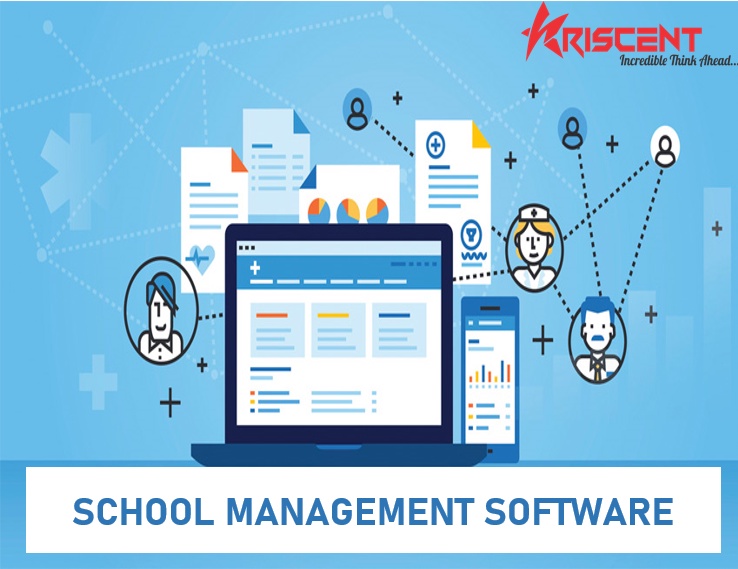Streamlining Education: The Impact and Evolution of School Management Software

In the digital age, school management software stands as a pivotal tool, transforming the way educational institutions operate, manage resources, and engage with students, parents, and staff. This article aims to explore the significance, core functionalities, benefits, and evolution of school management software, showcasing its role in enhancing administrative efficiency and fostering a collaborative educational environment.
Understanding School Management Software
School management software is a comprehensive platform designed to automate and streamline various administrative tasks within educational institutions. It encompasses a wide range of functionalities that facilitate efficient management of academic, administrative, and communication processes.
Core Functionalities of School Management Software
-
Student Information Management:
Tracking student records, academic performance, attendance, and personal details in a centralized database accessible to authorized personnel.
-
Staff and Faculty Management:
Managing staff information, including employment details, schedules, roles, and performance evaluations.
-
Academic Course Management:
Creating, scheduling, and managing academic courses, syllabi, lesson plans, and curriculum resources.
-
Attendance Tracking:
Automating attendance recording, monitoring absenteeism, and generating attendance reports for students and staff.
-
Examination and Grading:
Facilitating the creation and management of exams, grading, result processing, and generating transcripts or report cards.
-
Fee and Finance Management:
Managing fee collection, generating invoices, tracking payments, and maintaining financial records.
-
Communication and Collaboration:
Providing tools for communication between stakeholders, including students, parents, teachers, and administrators.
Benefits of School Management Software
-
Efficient Administrative Operations:
Automating routine administrative tasks reduces manual workload, minimizes errors, and enhances operational efficiency.
-
Enhanced Communication and Engagement:
Facilitating seamless communication between educators, students, and parents through instant messaging, notifications, and portals.
-
Data Centralization and Accessibility:
Centralizing student and administrative data in one platform ensures easy accessibility and data security.
-
Improved Academic Performance Tracking:
Enabling educators to monitor student progress, identify trends, and provide personalized support based on academic data.
-
Streamlined Financial Management:
Simplifying fee collection, invoicing, and financial reporting, leading to better financial transparency and management.
-
Parental Involvement:
Providing parents with access to student information, grades, attendance, and school announcements fosters parental involvement in their child's education.
Evolution of School Management Software
-
Traditional Systems to Cloud-Based Solutions:
From legacy systems installed on-premises, school management software has evolved into cloud-based solutions, offering scalability, accessibility, and cost-effectiveness.
-
Mobile Applications and Accessibility:
Integration of mobile applications has made school management software accessible anytime, anywhere, enhancing user experience and engagement.
-
Data Analytics and Insights:
Advanced analytics tools embedded within the software provide actionable insights, aiding in data-driven decision-making for academic improvement and resource allocation.
-
Integration with Learning Management Systems (LMS):
Seamless integration with LMS platforms allows for the consolidation of academic and administrative tools, offering a comprehensive educational ecosystem.
Choosing the Right School Management Software
-
Scalability and Customization:
Selecting a software solution that can scale with the institution's growth and offers customization to meet specific needs and workflows.
-
User-Friendly Interface:
Ensuring the software has an intuitive interface that is easy to navigate for administrators, educators, students, and parents.
-
Security Measures:
Prioritizing software with robust security protocols to safeguard sensitive student and administrative data.
-
Integration Capabilities:
Ensuring compatibility and integration capabilities with existing systems and third-party applications.
Future Trends in School Management Software
The future of school management software holds promising trends such as artificial intelligence (AI) integration for predictive analytics, augmented reality (AR) for immersive learning experiences, and further advancements in mobile accessibility and data-driven insights.
Conclusion
School management software stands as a transformative tool, revolutionizing the way educational institutions function and interact with stakeholders. Its evolution from traditional systems to cloud-based, mobile-accessible solutions has empowered educational institutions to streamline administrative tasks, enhance communication, and improve academic outcomes. Investing in the right school management software is crucial for educational institutions aiming to embrace digital transformation, foster collaboration, and create an efficient and engaging educational environment conducive to learning and growth.
In case you have found a mistake in the text, please send a message to the author by selecting the mistake and pressing Ctrl-Enter.
You must be logged in to comment.
Sign In /
Sign Up


No comments yet